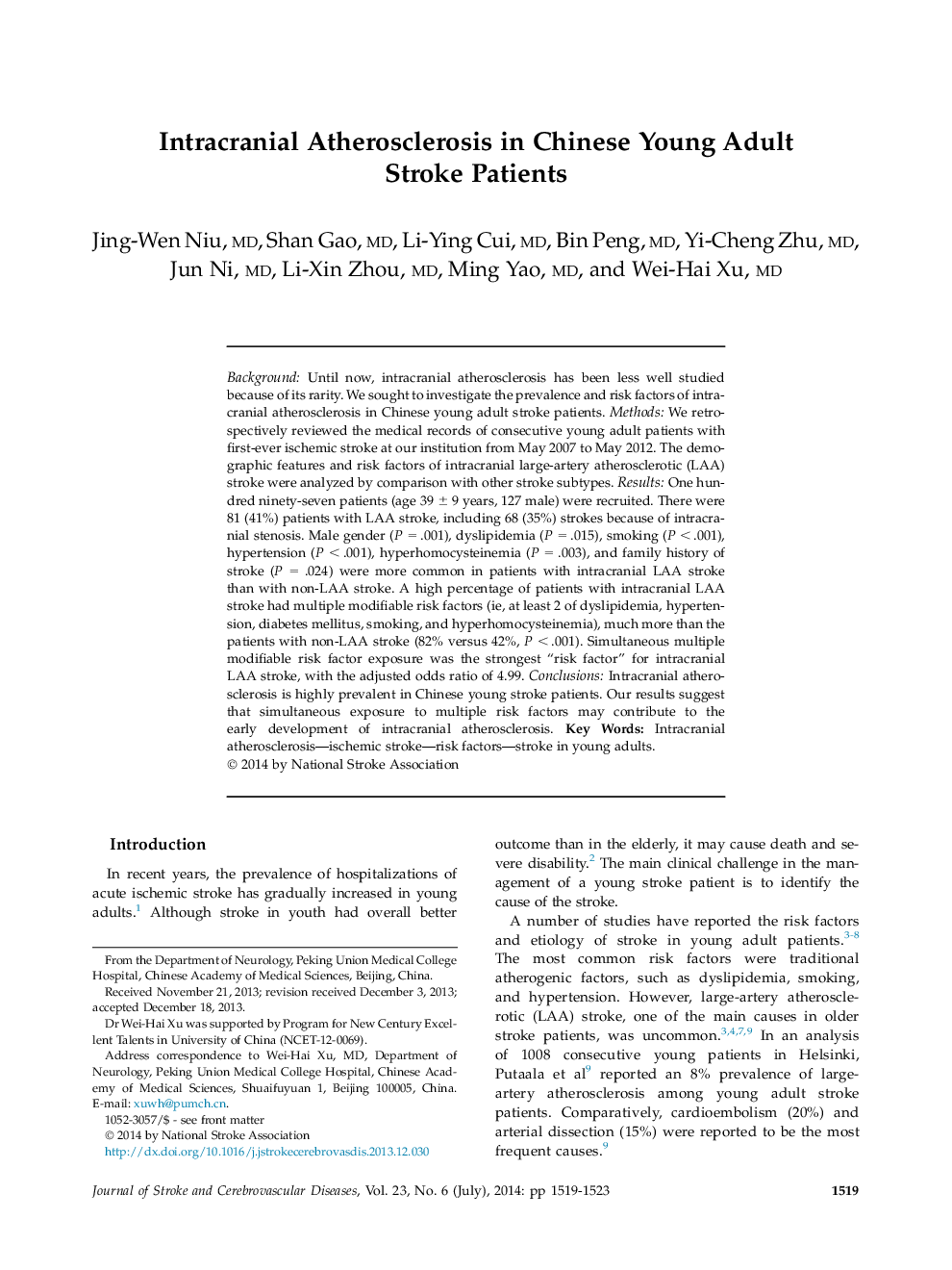| Article ID | Journal | Published Year | Pages | File Type |
|---|---|---|---|---|
| 5873301 | Journal of Stroke and Cerebrovascular Diseases | 2014 | 5 Pages |
BackgroundUntil now, intracranial atherosclerosis has been less well studied because of its rarity. We sought to investigate the prevalence and risk factors of intracranial atherosclerosis in Chinese young adult stroke patients.MethodsWe retrospectively reviewed the medical records of consecutive young adult patients with first-ever ischemic stroke at our institution from May 2007 to May 2012. The demographic features and risk factors of intracranial large-artery atherosclerotic (LAA) stroke were analyzed by comparison with other stroke subtypes.ResultsOne hundred ninety-seven patients (age 39 ± 9 years, 127 male) were recruited. There were 81 (41%) patients with LAA stroke, including 68 (35%) strokes because of intracranial stenosis. Male gender (P = .001), dyslipidemia (P = .015), smoking (P < .001), hypertension (P < .001), hyperhomocysteinemia (P = .003), and family history of stroke (P = .024) were more common in patients with intracranial LAA stroke than with non-LAA stroke. A high percentage of patients with intracranial LAA stroke had multiple modifiable risk factors (ie, at least 2 of dyslipidemia, hypertension, diabetes mellitus, smoking, and hyperhomocysteinemia), much more than the patients with non-LAA stroke (82% versus 42%, P < .001). Simultaneous multiple modifiable risk factor exposure was the strongest “risk factor” for intracranial LAA stroke, with the adjusted odds ratio of 4.99.ConclusionsIntracranial atherosclerosis is highly prevalent in Chinese young stroke patients. Our results suggest that simultaneous exposure to multiple risk factors may contribute to the early development of intracranial atherosclerosis.
